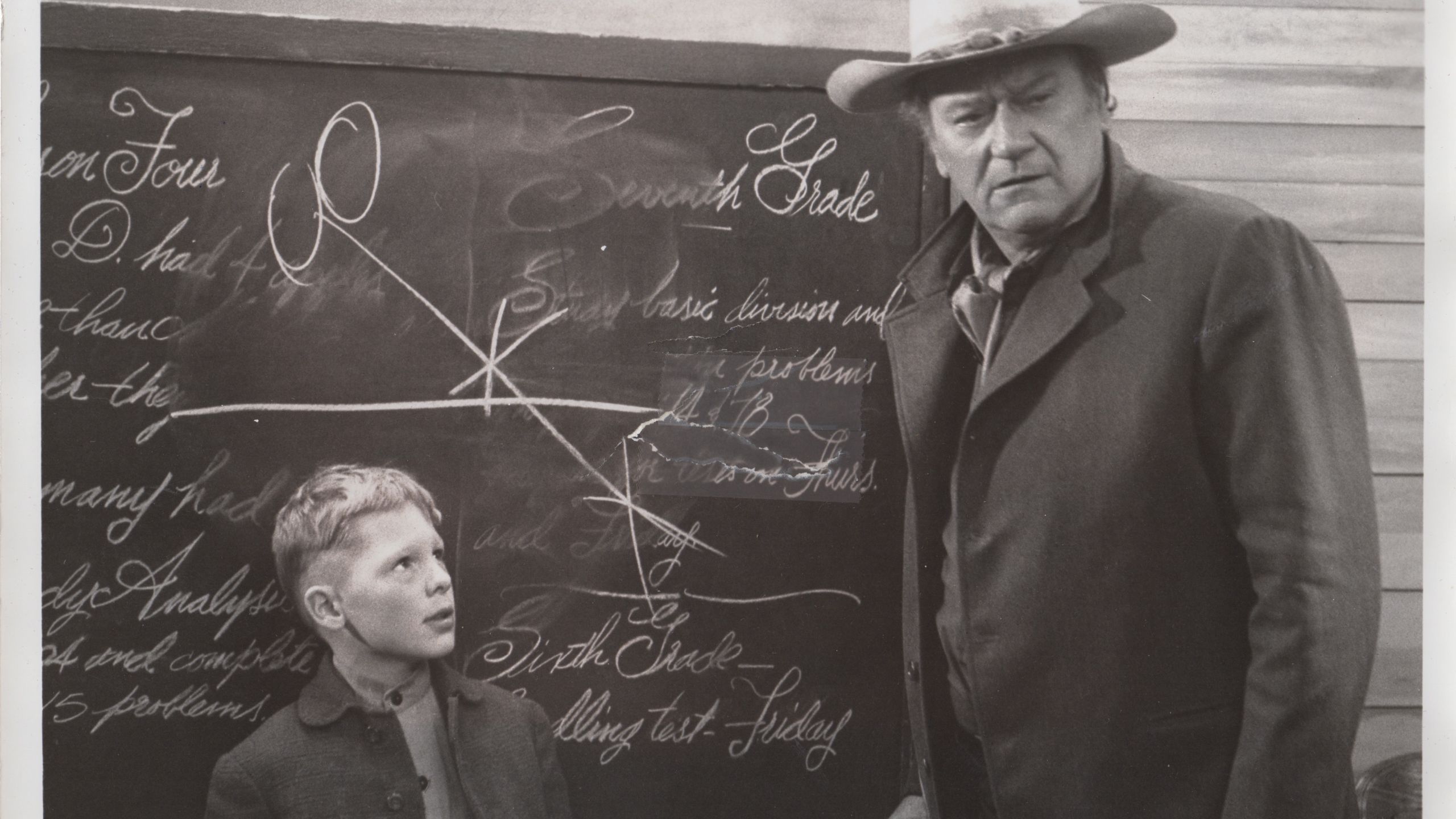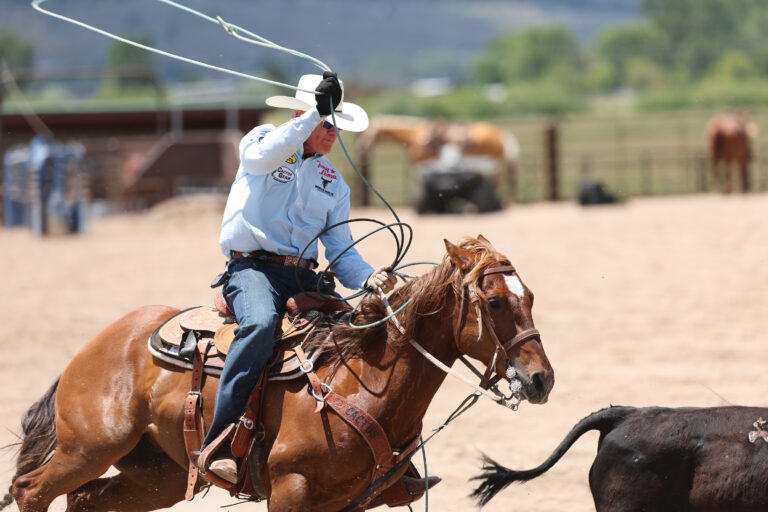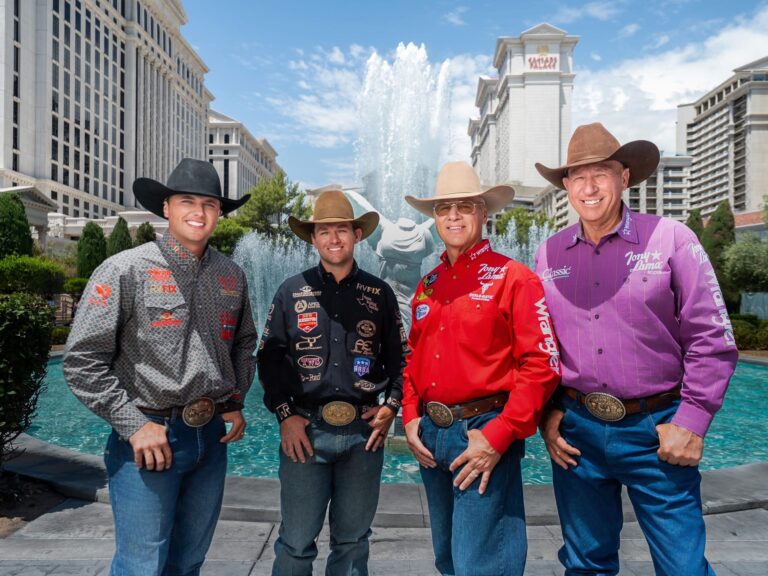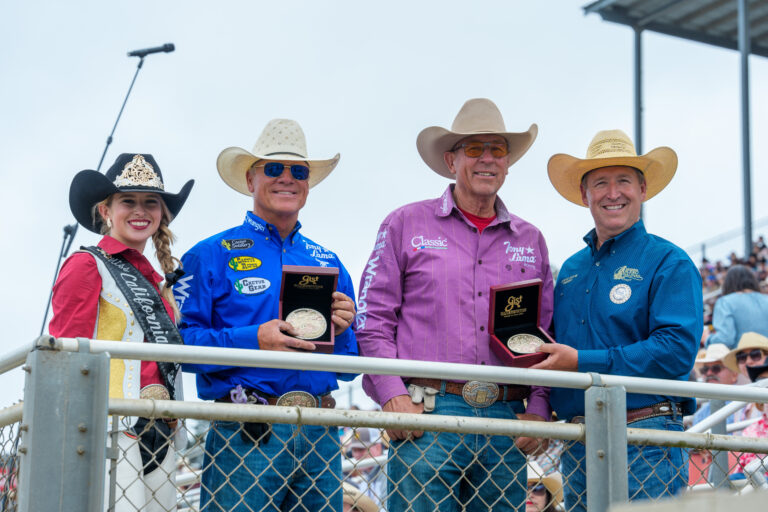When you’re first learning to rope, it’s typically easier for a kid to master heading. I think that’s why I gravitated toward heading when I was getting started. It was an easier task for a skinny, little munchkin when I was 7-8-9 years old to be able to run up there and get it around the horns, then get a dally. The basic process is an easier task, so that’s what I studied and watched when I started roping horseback.
There were some really good ropers in the Southern California area where I grew up. Larry Goss, Danny Costa and Kim Burke jackpotted around there, and guys like Reg Camarillo, H.P. Evetts and Jim Rodriguez were the rodeo headers I paid attention to back then when they were in the area.
Then—when I was about 12 or 13—my stepdad Gene O’Brien wanted to draw a little bigger circle than just Southern California and a few ropings in Arizona. Gene O wanted to go to some of the bigger ropings of that era, like Oakdale, Chowchilla and Riverside (California). But Gene was a header, and he refused to heel. Gene made the decision for me that I was going to start heeling. I was devastated. Suddenly, my heading days and dreams were over and I needed to figure out how to heel.
I didn’t have a very good attitude about switching ends at first. But that didn’t last long, because I had my attitude adjusted by Gene O pretty quickly. I sulled up for a couple days, but Gene was old school. When you stepped out of line, you got your butt whipped with a piggin’ string or a rope. Th at’s just the way it was. Looking back now, I’m actually grateful that he laid down the law the way he did.
Since Gene was about to start entering us as a team, my focus changed from studying the guys who headed good to people like Leo and Jerold Camarillo, Denny Watkins and Walt Woodard. I was lucky to have some natural ability at heeling. I could always see the timing, and I could see that you had to heel steers when their feet jumped off the ground. I could see what those good guys were doing. I just needed to figure out how to get it done myself.
[SHOP: The Champ’s Cactus Heel Ropes]
(As an Amazon Associate, we earn from qualifying purchases made through affiliate links.)
It didn’t take too long for me to figure out how to catch two feet pretty consistently. By 12-13-14 years old, you’re just starting to get big and strong enough to swing your rope with some power and speed on it, to where you can time the steer and he can’t outmaneuver you. As I started to compete as a heeler, I kept getting bigger and stronger and more savvy about the task at hand, which led to some success.
Within a couple years of switching ends, I got to where I could hold my own in our Southern California circle. I started getting good partners, and that made it fun. Then I started realizing that the heeler was the man. Back then, when people talked about the guys who were getting all the money, they talked more about the good heelers than the good headers. I was like, “I want to get good at this.” From that point on, I poured myself into my heeling. I got fanatical about it, and all I wanted to do was compete and win.
I went to those ropings for a year or two with my stepdad. Then people like Danny Costa hauled me around, and broadened my circle, which allowed me to climb the competition ladder. I placed at the Chowchilla Stampede (eight-steer average) the first time I entered it. I think I was 14. I grew up right at the cutline of the era when they started handicapping ropers and ropings. Because I placed at that first big roping I entered, I never got to go to anything but open ropings. I was never able to go hide, play with a lower number and take advantage of the handicap system. My two choices were sink or swim—to learn to get good enough to win at the highest level or quit. Looking back, I think it was fate; the grand design; God’s plan that I became a heeler. It’s been a fascinating 45-plus years, and I’m still infatuated with it.









